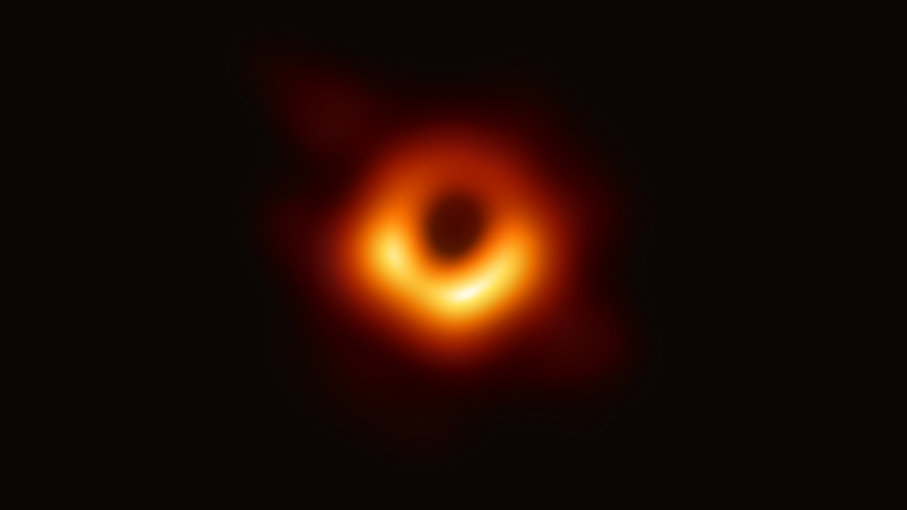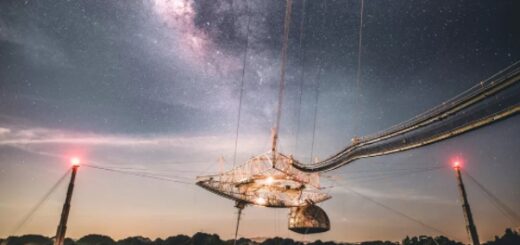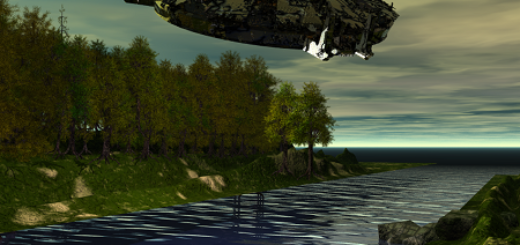The First Image of a Black Hole Is Here

Here’s the first image of a black hole, the picture that required the collaboration of more than 200 researchers. This black hole is supermassive and resides in the center of Messier 87, or M87, an elliptical giant galaxy over in Virgo. EHT COLLABORATION
An event horizon is the point of no return, a spherical region surrounding the gaping maw of a black hole beyond which nothing, not even light, can escape. We have no idea what mysteries lie inside, but we do know that our universe ends abruptly at this terrifying boundary into the unknown.
Now, after two decades of international collaboration, some of the world’s most powerful radio telescopes have captured an image of a supermassive black hole’s event horizon. By doing so, they proved that the predictions arising from Einstein’s theory of general relativity are valid even in the most extreme cosmic environment possible.
The black hole in the image lurks in the center of the massive elliptical galaxy Messier 87 (M87) in the constellation Virgo, some 55 million light-years distant. The release of the image was highly anticipated all over the world, and published in several studies appearing in the journal Astrophysical Journal Letters.
Supermassive black holes dictate the evolution of the galaxies they inhabit, so a direct look at this one’s event horizon could open a new window of understanding into how these behemoths work. And this monstrous object is quite the specimen: It has a whopping mass of 6.5 billion suns all crammed into an event horizon measuring nearly half a light-day across.
Into M87’s Event Horizon
Despite its incredible size and mass, no single telescope on the planet could capture its portrait. It’s simply too far away to resolve. To remedy this, astronomers used a method known as very long baseline interferometry to combine the collective observing power of eight of the world’s most powerful radio telescopes to do the job. The Event Horizon Telescope (EHT) is a virtual telescope as wide as our planet – and powerful enough to capture the first glimpse of one of the most massive black holes known to exist.
“We have taken the first picture of a black hole,” said EHT project director Sheperd S. Doeleman, of the Harvard-Smithsonian Center for Astrophysics, in a statement. “This is an extraordinary scientific feat accomplished by a team of more than 200 researchers.”
Although black holes are, well, black, should there be any matter close to the event horizon, extreme friction in the relativistic environment will rip electrons from atoms, creating a powerful fireworks display. This is why the EHT’s first image shows a dark circle surrounded by a bright ring of emissions. These emissions are being produced just outside the black hole’s event horizon, where the extremely hot gases orbiting it are heated to several billions of degrees Kelvin, with the event horizon itself appearing as a silhouetted dark disk against a bright background – features that confirm what theoretical physicists predicted in the run-up to today.
“The confrontation of theory with observations is always a dramatic moment for a theorist,” said EHT board member Luciano Rezzolla of Goethe Universität, Germany, in an ESO statement. “It was a relief and a source of pride to realise that the observations matched our predictions so well.”
This is possibly the most profound outcome of the EHT’s observation. All of the theoretical predictions for what the EHT might see are based on the framework of Einstein’s general relativity, a theory that has proven robust since its formulation more than 100 years ago. On seeing this first image, physicists remarked on how precisely the reality of a black hole’s event horizon matches the predictions of general relativity.
A New Era of Black Hole Astronomy
This first image is just that, the first.
MIT CSAIL
✔
@MIT_CSAIL
Here’s the moment when the first black hole image was processed, from the eyes of researcher Katie Bouman. #EHTBlackHole #BlackHoleDay #BlackHole (v/@dfbarajas)
View image on Twitter
56.3K
7:51 PM – Apr 10, 2019
Twitter Ads info and privacy
17.2K people are talking about this
The EHT collaboration will continue observing M87 and a second target, the supermassive black hole in the center of our galaxy, a 4 million solar mass object called Sagittarius A*.
Counterintuitively, although Sagittarius A* is comparatively close (only 25,000 light-years away, 2,000 times closer to us than M87), it has a different set of challenges. One problem is that as Sagittarius A* is smaller, its emissions vary over shorter timescales than M87’s monstrous black hole, making observations more difficult. Also, as we are embedded inside our galaxy’s disk, which contains a lot of interstellar dust, the EHT’s signal suffers more scattering, making it more challenging to resolve. As most of the intergalactic space between us and M87 is pretty empty, scattering is less of a problem.
When we’ll see Sagittarius A* remains to be seen, but now that the technology behind the EHT has been proven, our understanding of supermassive black holes is sure to blossom.
Full disclosure: Author Ian O’Neill worked with the University of Waterloo on their press announcement and an article showcasing Avery Broderick, a professor at Waterloo and the Perimeter Institute, and member of the EHT team. You can read about Broderick’s work here.



 Creators of mankind
Creators of mankind Description of “Tall white aliens”
Description of “Tall white aliens” Where they came from?
Where they came from? About hostile civilizations
About hostile civilizations The war for the Earth
The war for the Earth “Tall white aliens” about eternal life
“Tall white aliens” about eternal life Video: “Nordic aliens”
Video: “Nordic aliens” Aliens
Aliens Alien encounters
Alien encounters The aliens base
The aliens base UFO
UFO Technology UFO
Technology UFO Underground civilization
Underground civilization Ancient alien artifacts
Ancient alien artifacts Military and UFO
Military and UFO Mysteries and hypotheses
Mysteries and hypotheses Scientific facts
Scientific facts


















